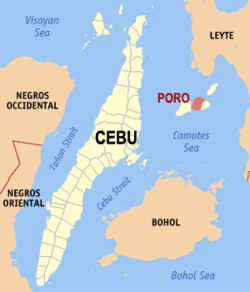
Leyte, officially the Province of Leyte, is a province in the Philippines located in the Eastern Visayas region, occupying the northern three-quarters of Leyte Island. Its capital is the city of Tacloban, administered independently from the province. Leyte is situated west of Samar Island, north of Southern Leyte and south of Biliran. To the west across the Camotes Sea is the province of Cebu.
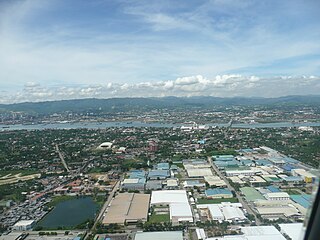
Lapu-Lapu City, officially the City of Lapu-Lapu, is a 1st class highly urbanized city in the Central Visayas region of the Philippines. According to the 2020 census, it has a population of 497,604 people.
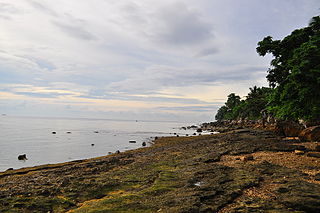
Catmon, officially the Municipality of Catmon, is a 4th class municipality in the province of Cebu, Philippines. According to the 2020 census, it has a population of 33,745 people.
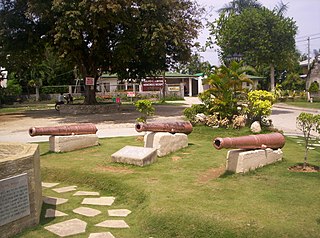
Argao, officially the Municipality of Argao, is a 1st class municipality in the province of Cebu, Philippines. According to the 2020 census, it has a population of 78,187 people.
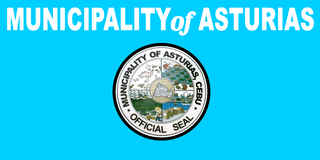
Asturias, officially the Municipality of Asturias, is a 3rd class municipality in the province of Cebu, Philippines. According to the 2020 census, it has a population of 55,397 people.

Borbon, officially the Municipality of Borbon, is a 4th class municipality in the province of Cebu, Philippines. According to the 2020 census, it has a population of 38,187 people.
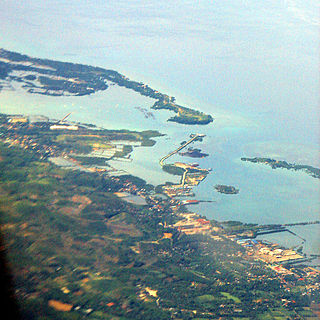
Carmen, officially the Municipality of Carmen, is a 3rd class municipality in the province of Cebu, Philippines. According to the 2020 census, it has a population of 57,897 people.

Daanbantayan, officially the Municipality of Daanbantayan, is a 1st class municipality in the province of Cebu, Philippines. According to the 2020 census, it has a population of 93,502 people.

Medellin, officially the Municipality of Medellin, is a 2nd class municipality in the province of Cebu, Philippines. According to the 2020 census, it has a population of 59,605 people.

Pilar, officially the Municipality of Pilar, is a 5th class municipality in the province of Cebu, Philippines. According to the 2020 census, it has a population of 12,506 people.
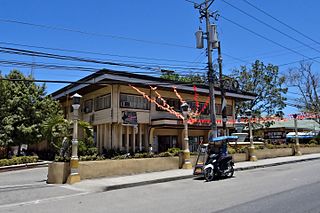
San Fernando, officially the Municipality of San Fernando, is a second-class municipality in the province of Cebu, Philippines. According to the 2020 census, it has a population of 72,224 people.

San Francisco, officially the Municipality of San Francisco, is a 3rd class municipality in the province of Cebu, Philippines. According to the 2020 census, it has a population of 59,236 people.
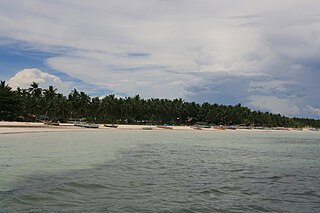
Santa Fe, officially the Municipality of Santa Fe, is a 5th class municipality in the province of Cebu, Philippines. According to the 2020 census, it has a population of 34,471 people.
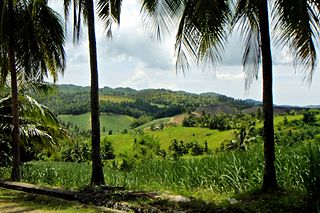
Sogod, officially the Municipality of Sogod, is a 4th class municipality in the province of Cebu, Philippines. According to the 2020 census, it has a population of 39,447 people.

Tabogon, officially the Municipality of Tabogon, is a 3rd class municipality in the province of Cebu, Philippines. According to the 2020 census, it has a population of 41,432 people.

Tudela, officially the Municipality of Tudela, is a 5th class municipality in the province of Cebu, Philippines. According to the 2020 census, it has a population of 11,304 people.

San Vicente, officially the Municipality of San Vicente, is a 6th class municipality in the province of Northern Samar, Philippines. According to the 2020 census, it has a population of 6,928 people.

Isabel, officially the Municipality of Isabel, is a 1st class municipality in the province of Leyte, Philippines. According to the 2020 census, it has a population of 46,781 people.

Kananga, officially the Municipality of Kananga, is a 1st class municipality in the province of Leyte, Philippines. According to the 2020 census, it has a population of 59,696 people.

Central Visayas is an administrative region in the Philippines, numerically designated as Region VII. It consists of four provinces: and three highly urbanized cities: Cebu City, Lapu-Lapu, and Mandaue).

